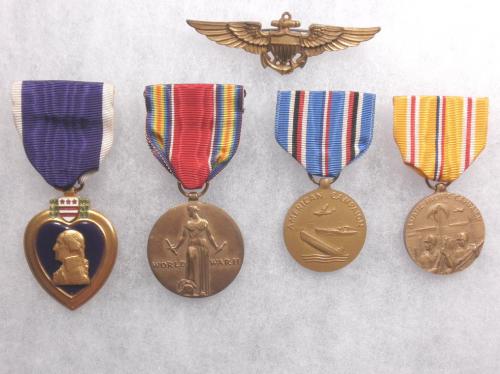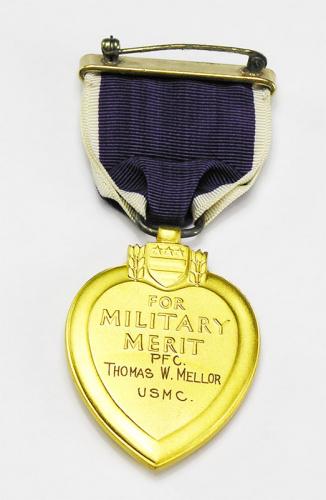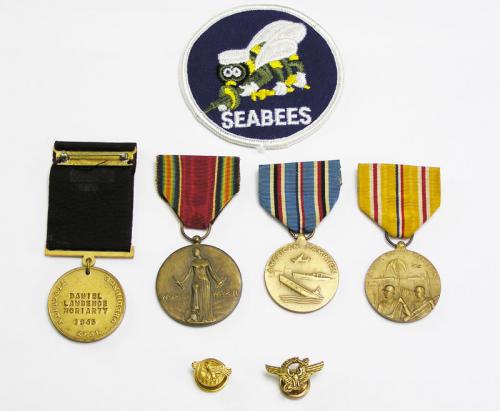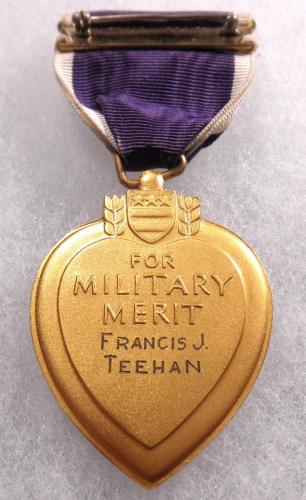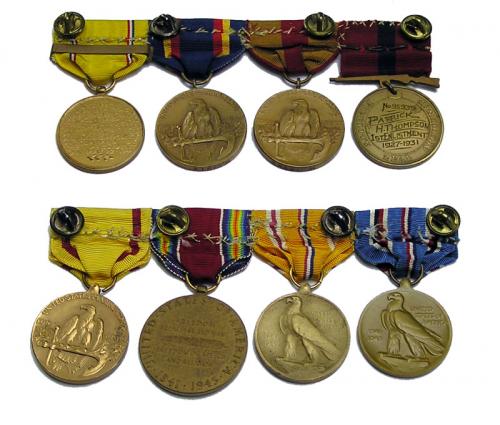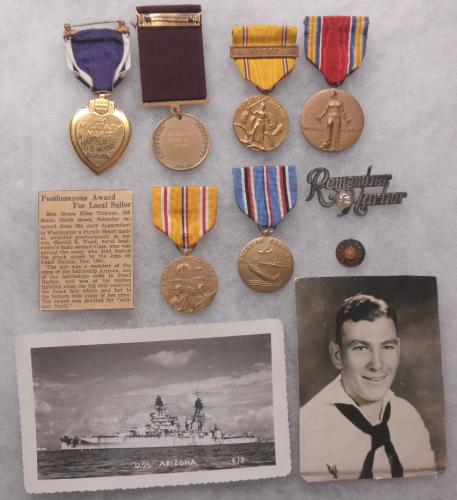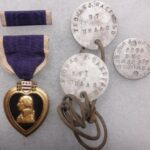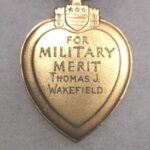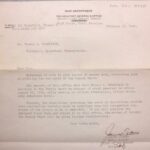Thomas Wakefield was born in Oklahoma April 6, 1893. His family must have moved to Pennsylvania around the turn of century. The 1920 census shows that he had a wife, Mary. Wakefield's last residence was Rochester, Pennsylvania.
PFC Wakefield's group includes his 1943 issued officially engraved slot brooch Purple Heart, edge numbered 159403 with ribbon bar and presentation case. Also included are 3 dogtags, one of which is marked "77" and two marked "577", and all 3 with his name and serial number 8879. Also included are two original War Department letters including the Purple Heart award. They are both pictured here. Note from the narrative below that Wakefield was one of a total of 7 WIA's in SSU 577.
This is copied from www.ourstory.info:
"SSU577: This was one of the sections which had been recruited on the campus at Columbia University in New York City, N.Y. Dr. Rockwell had organized a Red Cross Ambulance Company of over a hundred students and friends. They were ordered to Allentown, Pa., where the larger company was split into three sections, numbered 75, 76 and 77. Later the prefix 500 was added, to prevent confusion with the numbers being used at that time by the early volunteer ambulance units. No review has been developed from information received from those giving a report on Section 576 — only 575 and 577 have provided detailed reviews— so we must assume that the middle section was disbanded or absorbed into other units at the camp.
Section 577 was billeted, on their arrival at the Fairgrounds at Allentown, in the sheep exhibition building. Several changes in early commanders took place because the medical officers were eventually recalled for other branches of the Service. Lt. Warren's name is recorded as a commander. Along with Section 575, the Section went into Major Devereux's contingent, leaving for Tobyhanna in the Fall of 1917, for some cold barracks in the snows of the Pocono Mountains. The Major is reported to have ordered and paid for, out of his own pocket, a couple of carloads of coal for the barracks stoves. Many men should remember well the "coal detail."
At mid-night on Christmas Day, a turkey stuffed contingent marched quietly to the waiting train which sped them to Hoboken, N.J., to board the S.S. Pastores early the next morning, December 26, 1917. They landed at Brest and went by train to St. Nazaire to assemble their ambulances.
The report on engagements and assignments is given as follows: Section 577 was attached to the 34th French Inf. Div., and later the 162nd Inf. Div. Engagements were in areas involving the battle for Mt. Kemmel in Lys River sector; Aisne defensive; Oise-Aisne offensive; Verdun sector; and at Gerardmer sector at the time of the Armistice. The 34th Division Commandant, General Savatier, cited the Section in the Orders of the Division and awarded eleven individual Croix de Guerres. The action during the period of April 24 to 30, 1918 was so severe that 13 of the Section's 20 cars were put out of commission, and they were called upon to do stretcher-bearer work and were helped by some British ambulance units. We understood the losses to the 34th Division were so great that it had to be disbanded. (We have reports of SSU sections working with this French Division later in the war, so the remnants must have been reorganized and rebuilt to fighting strength.)
Section 577 served in the Army of Occupation in Alsace and Lorraine. They were relieved and went to Brest, returning to the U.S. on the Great Northern. The Section was discharged April 22, 1919."
Casualties suffered by the Section show— 1 died, 2 killed in action, and 7 wounded. Following the Armistice, several men transferred to Paris to take part in the show, "Let's Go!" Most important out of these were of course, Jerry Hoekstra and Bill Reardon."

